Sony WH-1000XM5 Review - Improvement, but is it Enough for 2022?
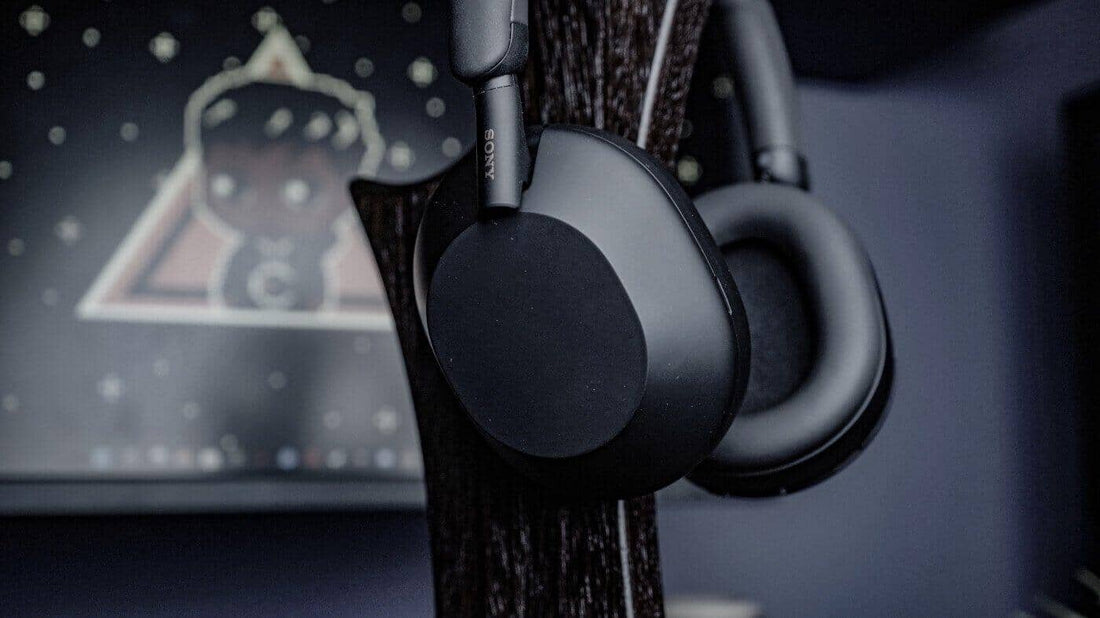
Review written by Chrono
Introduction
Of all the wireless, active noise-canceling headphones out there, few seem to get as much love as those from Sony's 1000-series of over-ear headphones. Recent releases such as the WH-1000XM3 and XM4 have easily made it to the top of many wireless headset recommendation lists, and they're probably the over-ear headphones I most commonly see others wear when out and about. In this article I'll be sharing my experience with the fifth and latest entry to the series, the WH-1000XM5, which was released just a few weeks ago at the retail price of $400.
Sources and Music Used in Listening Tests
For this review, no discrete amplifier was used as this is a headphone meant to be primarily used for wireless, bluetooth listening. I used my iPhone 13 Pro as the source audio device, with Apple Music Lossless and Tidal as the streaming services.
Build and Comfort
While the design of the 1000-series had remained nearly unchanged since the introduction of the Sony MDR-1000X, the WH-1000XM5 marks a rather significant departure in the headphone's design; and unfortunately, this is a change that I'm personally not particularly enamored with. Admittedly, when placed next to the XM4, the XM5's chassis sports a cleaner, more modern-looking design. However, aesthetics aside, I'd classify this redesign as a downgrade from that of the previous models.
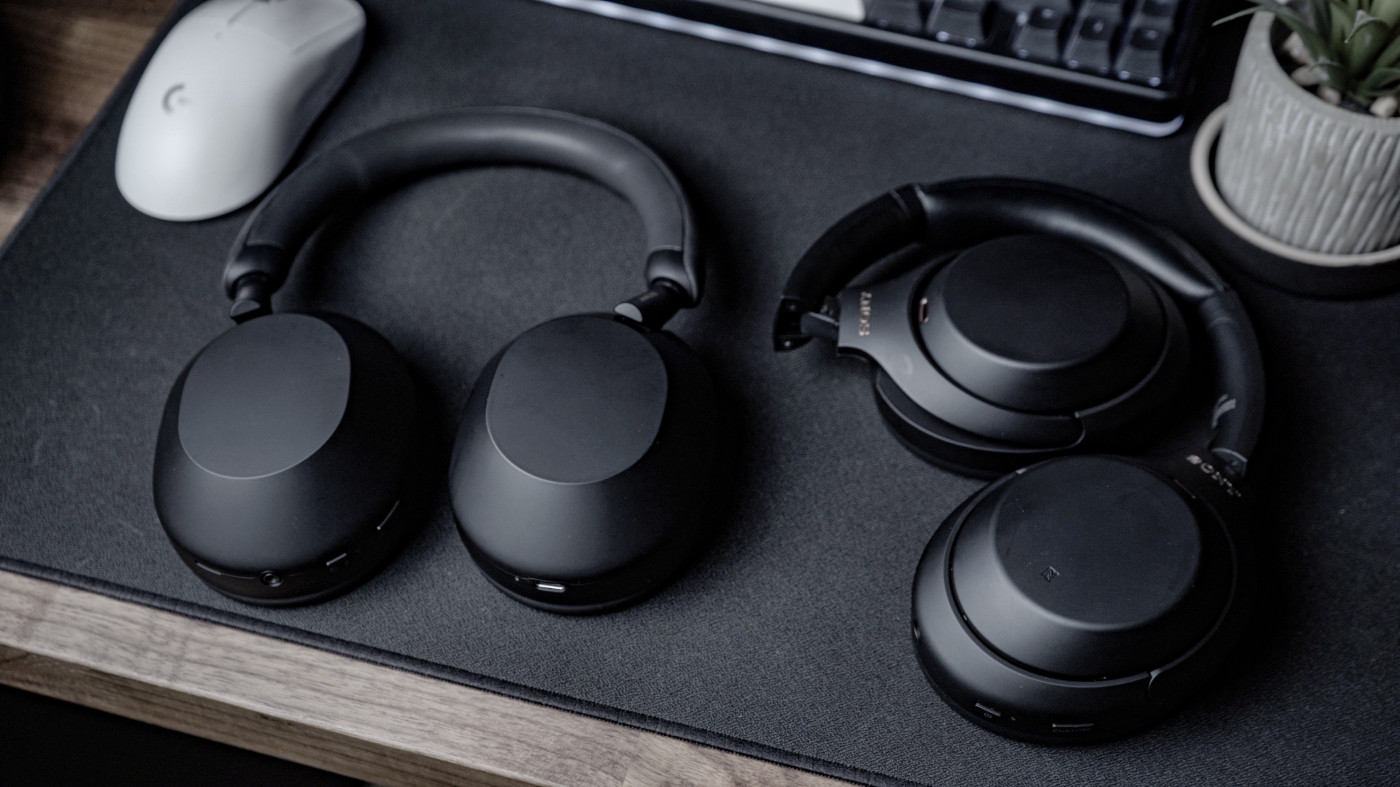
Most noticeably, the new build on the XM5 no longer has collapsible ear cups, which combined with the deeper cup depth makes for a headphone that is noticeably bulkier than its predecessor--a change which is reflected in the headphone's carrying case, and is also easy to observe when worn as they don't have as low of a profile. As far as the build quality is concerned, though, the XM5 still feels very solid for a headphone that's made primarily out of plastic, and I don't see these breaking down from regular, every-day usage.
For comfort, I think mileage will vary per user in the case of the XM5, but at least in my experience I once again prefer the feel of the XM4. Despite the inner diameter of the ear cups being larger and more spacious on the XM5, there are a few key differences in the fit that for me just made them a little bit less comfortable to wear during prolonged listening sessions than the XM4.
For starters, the clamp force on the XM5 feels a tiny bit stronger for me. Additionally, I feel as though the new headband design does not do as good of a job at distributing the headphone's weight evenly, so while the XM5 is a few grams lighter than the XM4, it's actually the predecessor that felt lighter for me when wearing. Lastly, the change that stood out to me the most was the material change for the earpads. Previously the XM4 used very soft protein leather covers for the ear pads and headband, while the XM5 is now using a sort of silicone, or rubber-like material. The new material used on the XM5 is still soft, but over time I found the new pads to warm up faster and retain more heat than those of the XM4--something which rapidly became bothersome for me.
Features and Accessories
As has come to be expected from the 1000-series, the WH-1000XM5 is a feature-packed headphone that allows for a fairly high degree of versatility and user customizability.
Of course, as a wireless ANC headphone, the primary feature of the XM5 is that it has bluetooth support for wireless audio streaming; allowing for simultaneous connectivity with up to 2 devices, and featuring LDAC support. Then there's the active noise-canceling itself, which improves on the XM4's already-world-class implementation and delivers some of the very best performance I've heard in this regard--it easily matches what something like the Bose 700 can achieve and does an incredible job at keeping the outside world silent as you enjoy your music. It's also worth mentioning that the XM5 brings along an improved version of the transparency mode, which now provides an better sense of awareness than on the XM4 by more effectively blending in exterior sounds into your mix.
The headphone unit itself also features a lot of the physical commands that you've probably come to expect from a modern ANC headphone. This includes the usual play/pause feature when putting the headphones on and off, touch/gestures on the right ear cup to control audio playback and volume, as well as voice assistant activation. On the rear side of left ear cup you also have a power button that doubles up as the pairing button, along with an ANC mode toggle that lets you rotate through the different noise canceling settings (Off/On/Transparency).
Then there's Sony Headphones app support which allows you to customize things such as the level of exterior noise blending in transparency mode, a speak to chat feature toggle, ANC toggle button configuration, and my personal favorite: EQ settings.

As for the included accessories, the XM5 keeps things simple with a low-profile carrying case, a 3.5mm to 3.5mm audio cable, and a USB-A to USB-C charging cable.
Sound
Now that we got all that stuff out of the way, we get to talk about what I think is most important and that is the XM5's sound. While I may not have been that happy with the design changes on the XM5, I do believe that it is the best-sounding entry in this series of headphones yet.
Tonal Balance and Frequency Response
For those who might have read or watched some of my other reviews, it's no secret that I was not a big fan of the XM4 as I found it to be too aggressive in both the bass and treble regions. The XM5 still has a colored sound that I definitely wouldn't classify as being natural or neutral-sounding, but in my opinion it's a lot more laid-back, warmer-sounding, and easier to get into than the XM4 was while making some noteworthy improvements.
The following is how the Sony WH-1000XM5 measures on the GRAS 43AG with anthropometric pinna relative to the combined version of the Harman preference target (2013 bass, 2018 mids and treble). This is a smoothed reference point that's suitable for most listeners looking for an even spectral balance from their headphones.
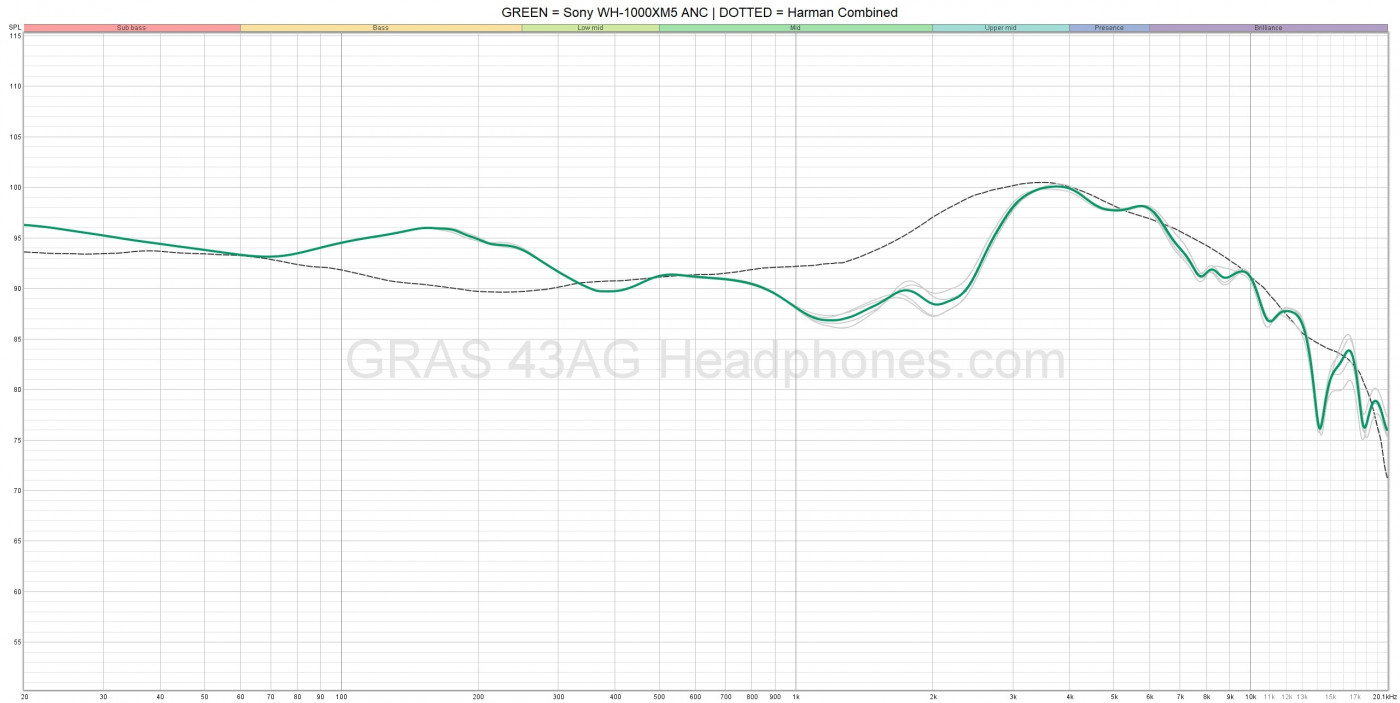
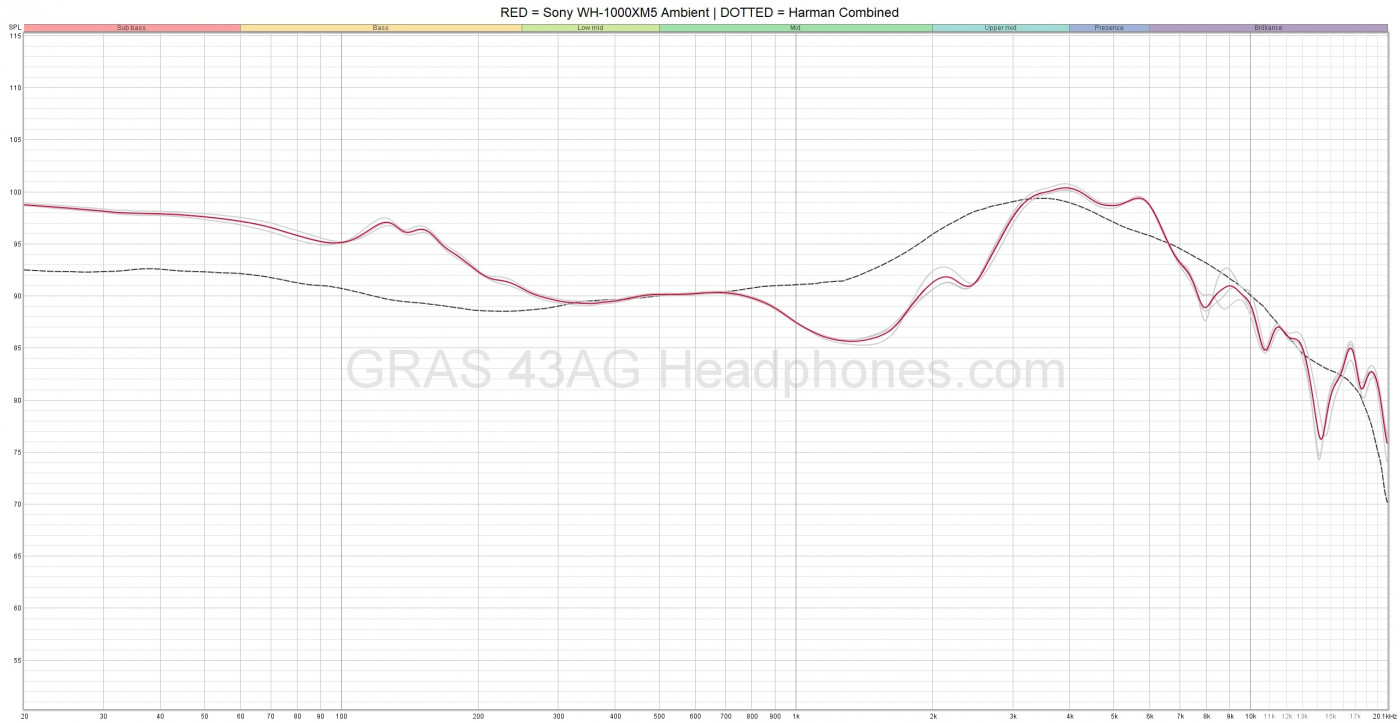
How do you read this? The dotted black line is the target (the reference point), and the colored line are how the headphones in question measure. Effectively, this shows the headphone’s frequency response in relation to a known reference point. It’s important to note that because the target is highly smoothed, there are places where deviation is required (like at around 9khz for example).
The bass region is still very much boosted, with a rather generous bass shelf under 150hz that provides plenty of rumble to the mix and really puts a spotlight on the lowest of sub-bass frequencies. One key difference between the XM5 and the XM4's bass, though, is that unlike the XM4 which had a very severe bump at around 120-150hz, the XM5's bass shelf seems to be a lot more uniform and therefore quite a bit cleaner sounding, without having as much of the overbearing swell that the XM4's bass had. This is without a doubt a change that I consider to be an improvement as it makes for a slightly tighter bass response, although I will note that unfortunately the bass shelf still settles late at around 250hz, and does cause some upper bass bleed into the lower mids, making for a somewhat muddy bass-to-midrange transition.
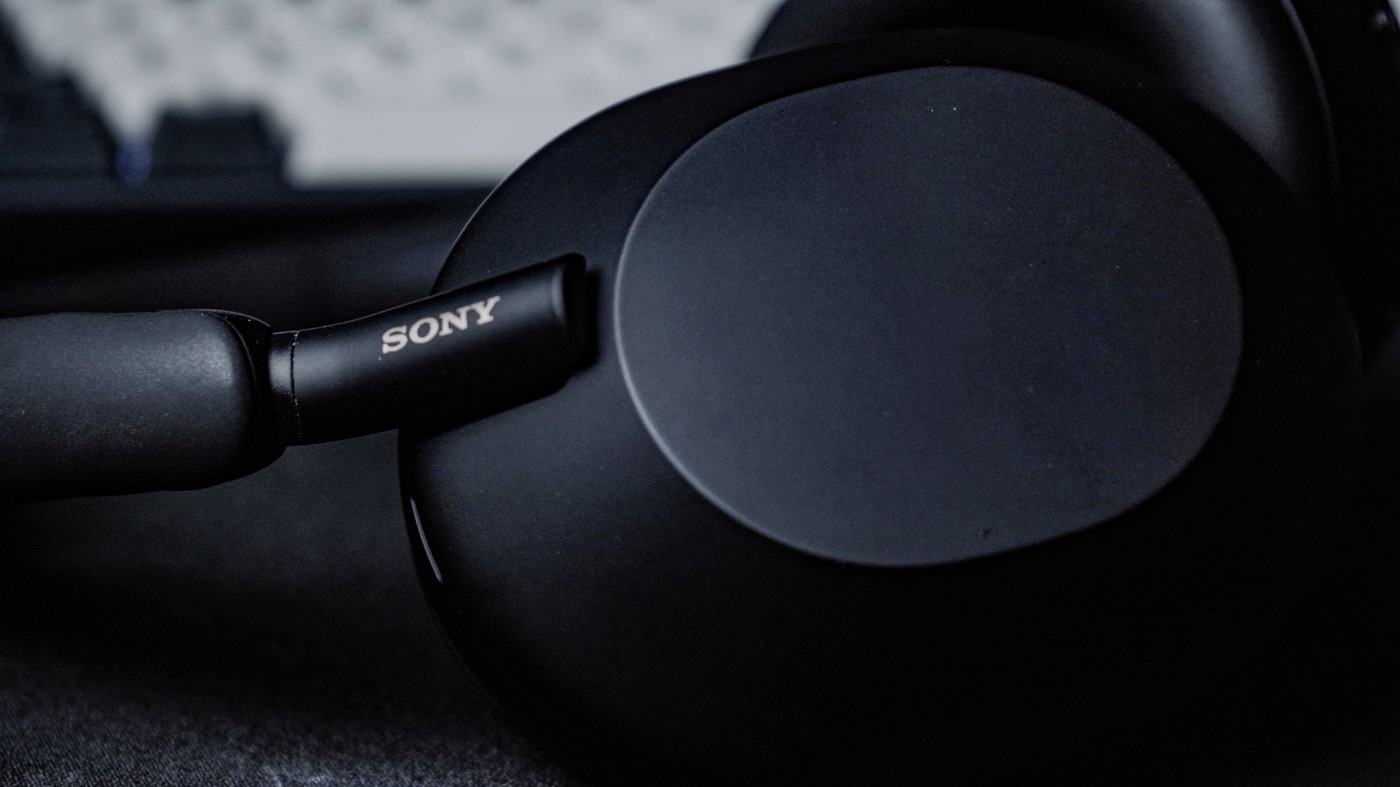
Moving on to the mids, there is a bit of a congested-sounding quality or timbre to the fundamental tones in that 250-350hz range as a result of the upper bass bleed, but aside from that, the midrange on the XM5 is significantly more balanced and well-represented when compared to the XM4's midrange presentation. Also worth mentioning that because the bass and treble are not as aggressive on the XM5 as they were on its predecessor, the midrange does feel quite a bit more prominent and richer as a result, with instruments and vocals no longer feeling drowned out by their boomy undertones and hot upper registers.
The treble range is where once again I feel as though the XM5 sees some improvement over the XM4. The XM4's lower treble region had a drastic peak at around 6Khz that introduced noticeable sibilance and quite a bit of glare. By comparison, the XM5 only has a slight 2-3dB bump at around the same region and is nowhere near as harsh-sounding as it was on the XM4. One thing I did notice while listening on the XM5, though, was that the upper treble is quite dark and feels muted, with a rather steep roll-off in the frequencies above 9-10Khz. This lack of presence in the upper-treble region, which took away some instrument and vocal overtones, in combination with the slightly congested lower mids made for an overall tonal balance that was quite warm, but also a little nasally and "boxy" in its timbre. As a result, this is why I find the XM5's tonal balance to be colored and not the most natural sounding. Nonetheless, as a whole, I still consider these changes to be an improvement over its predecessor's frequency response.
One last thing I'd like to mention about tonality is that although unfortunately the equalizer doesn't let me fine tune the frequency bands I wish to modify, I was able to get a tonality that I was pretty happy with using the predetermined filters. If you'd like to try out my EQ preset for the WH-1000XM5, these are the settings I used on the app:
- 400hz filter: -2
- 1000hz filter: -1
- 2500hz filter: -3
- 6300hz filter: -4
- 16000hz filter: +4
- Clear BASS filter: -6
Technical Performance
For technical performance I found the XM5 to actually be quite similar to the XM4, with no improvements that I could really discern in terms of detail retrieval and internal resolution despite a new driver being used on the XM5. I will say, though, that having a slightly more balanced frequency response did make for a somewhat cleaner image of the music when compared to the XM4. In this regard, though, my nod would still go to the Sennheiser Momentum 3 and the Apple AirPods Max, as those deliver the most structured presentation I've heard from wireless ANC headphones, yet.
One interesting change I did notice between the XM4 and XM5's performance, though, was that despite the XM4 seemingly having the slightly wider-sounding soundstage, it was actually the XM5 that delivered better imaging performance, with a better sense of directionality, and a more defined front-left, front-right, and center image.
Conclusion
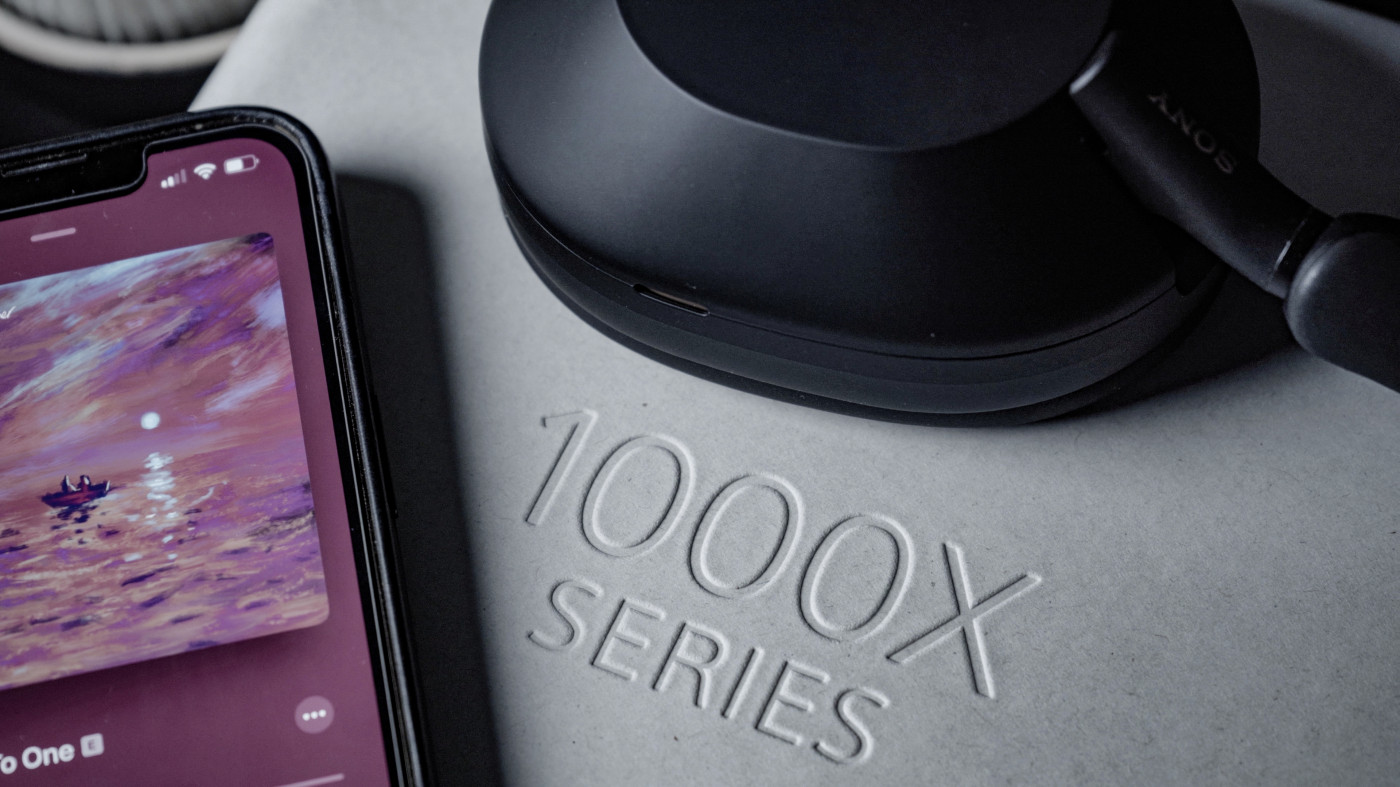
The Sony WH-1000XM5 is one of the most feature-complete headphones I've had the opportunity to listen to, and not only is it packed with features, but those features are well-implemented and easy for the user to navigate. Additionally, even though I personally found its predecessor to be a little more comfortable, the XM5 remains one of the most comfortable wireless ANC headphones that I've tested thus far, with a reliable build and travel-friendly form factor. Still, regardless of those great qualities it possesses, I struggle to find myself recommending the WH-1000XM5.
For its $400 retail price, I simply don't find its acoustic performance to be where it should be--neither in its tonal balance, nor in its technical performance. Even now, years after its release I find something like the Sennheiser Momentum 3 to deliver significantly better performance at a lower price point, and that is not the only ANC that I know I would take over the XM5. So, while I do think that this is an improvement over previous entries in the series, when taking what other companies' headphones offer into account, I will have to personally recommend passing on the WH-1000XM5.
-Chrono
Interested in checking out other ANC headphones? Check out this article where I compare some of my favorites!
Watch the video review here:
